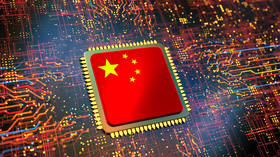China throws down the gauntlet in chip war with US

China’s National Bureau of Statistics (NBS) said on Monday that the nation produced 359.4 billion integrated circuits (ICs) in 2021, up 33.3% year on year. The growth comes amid the US-China battle for tech supremacy.
Statistics show last year’s Chinese production marked a significant acceleration from 2020, when its IC output rose 16.2% to 261.3 billion units. In terms of volume, China imported 432.5 billion ICs in 2021, still larger than the country’s output.
According to a report issued by the US-based Semiconductor Industry Association (SIA), China’s semiconductor industry could account for 17.4% of global sales by 2024, up from 9% in 2020, if its current momentum is maintained.That would make China the world’s No. 3 seller of chips, behind only the US and South Korea.
Semiconductors have been at the center of the trade war between the US and China. The nano-sized silicon wafers are a vital component of technological innovation.
Chips make up China’s biggest import, topping even crude oil and accounting for more than $300 billion in 2020. Beijing wants to end this dependence, particularly after China’s first global tech brand Huawei was cut off from US technology in 2018 under Washington’s sanctions.
In 2020, Washington placed sanctions on China’s largest chip maker SMIC. Since then, the Chinese government has turned to domestic tech companies in a drive to become ‘self-reliant’ and has also set a goal for the country to take the global lead in the production of microprocessors.
For more stories on economy & finance visit RT's business section












